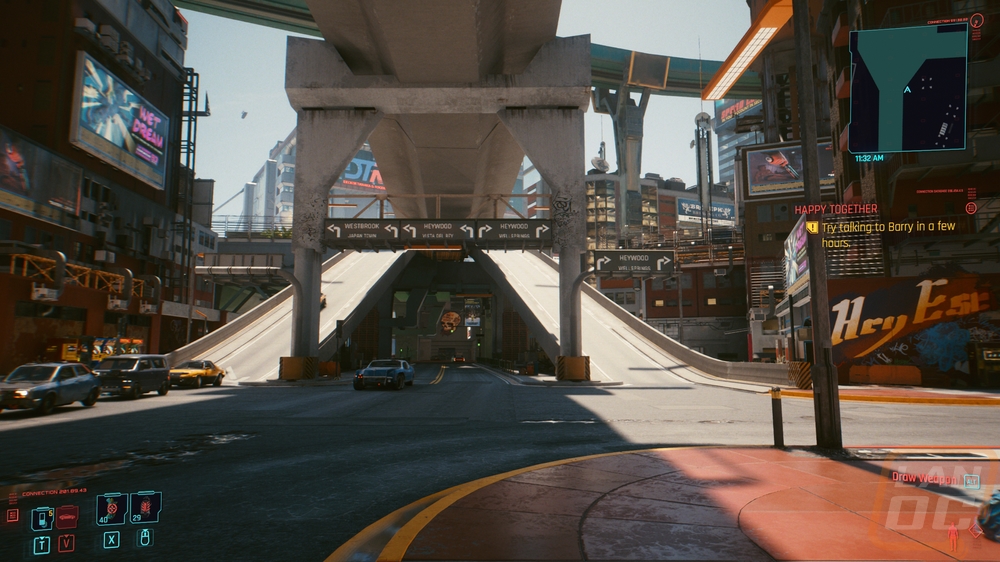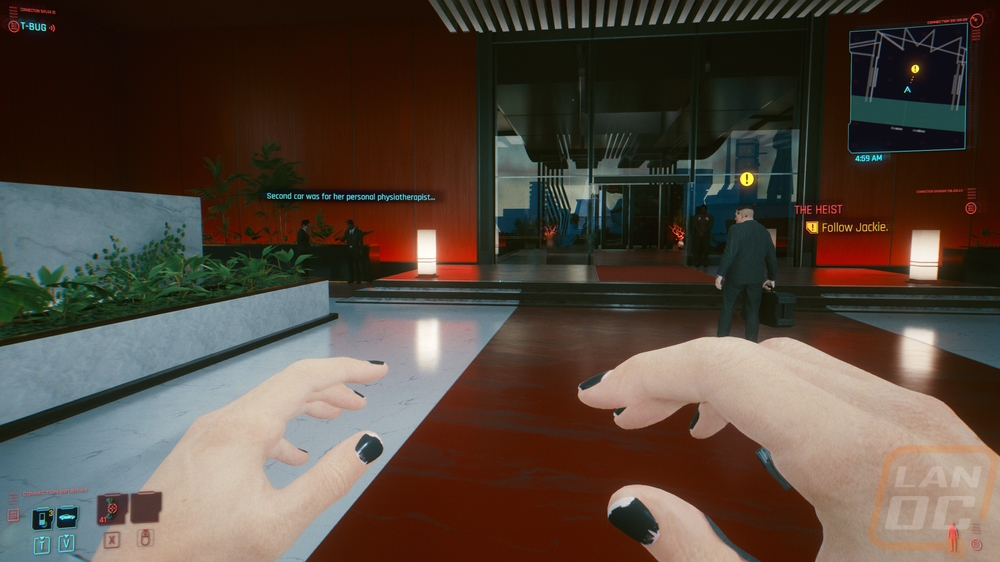There is a good chance that by now you have been playing Cyberpunk 2077 or you have it on your list of games that you plan on playing in the future. It is without a doubt the most hyped-up release of the year and everyone has been talking about it. It is an extremely demanding game and amazing detail. On top of that, it also has DXR or DirectX Ray Tracing capabilities as well as support for DLSS from Nvidia as well. Nvidia sent over a copy of the game and I’ve already seen a lot of outlets test out performance in the game. Rather than go that direction again, I just want to check out what ray tracing features it has and see if it's worth the investment to make sure your GPU supports them. So let's dive in and take a closer look!
Article Name: Ray Tracing in Night City aka Cyberpunk 2077
Game code provided by: Nvidia
Written by: Wes Compton
Amazon Affiliate Link: HERE
Just like with Modern Warfare, just because a game has ray tracing capabilities it doesn’t mean they have every feature implemented and even with specific features, it may not be implemented across the entire game. So today I want to check out what Cyberpunk 2077 had implemented and if you haven’t had a chance to play Cyberpunk 2077, even without ray tracing the graphics are great, even with a wide range of bugs that I hope they get fixed quickly. I did my testing on my Threadripper 1920X PC with a new RTX 3080 for a GPU. You can see some of the system updates we have been doing to this system HERE and HERE.

So for my testing, I ran at 1440p almost all of the comparisons are comparing between the Ultra detail mode and the Ray Tracing Ultra detail setting. The exception to this is the global illumination comparisons which are both on the ray tracing ultra detail but with the ray tracing detail itself turned up to the Psycho setting which is one up from ultra. That is the only way to turn on ray-traced global illumination and while I’m talking about that I might as well start with it first. This setting is very demanding and frankly is the most subtle which is why they don’t include it on the normal ray-traced high detail setting. This works with the ambient occlusion (that I will talk about shortly) to change the overall lighting. This bounces light off of game elements and up on to other objects. This happens with natural light as well and is how you get indirect light in unlit areas. In Cyberpunk this mostly lights up the underside of overpasses and buildings, lowing the shadow level in those situations as you can see in the pictures below.

Global Illumination Off

Global Illumination On

Global Illumination Off

Global Illumination On

Global Illumination Off

Global Illumination On
The ray-traced global illumination works with ray-traced ambient occlusion which in my opinion is the most important of the ray-traced features but it is also not something that stands out until you start comparing it side by side on and off. It is the difference between something looking natural or not though. At its most basic form, ambient occlusion is figuring out how bright light should be on any specific part of a surface. In Cyberpunk this ends up being less about the highlights on elements in the game and is more about the small shadows for anything in the sunlight but some elements in the shadows it also brings light on to those same elements. You can see examples of both in the pictures below like in the second example with the trash in a shadow gaining light on top. Then for the trash in the sunlight, you can see shadows in the folds of the bags have more definition. This brings some of the small elements to life.

Ambient Occlusion Off

Ambient Occlusion On

Ambient Occlusion Off

Ambient Occlusion On

Ambient Occlusion Off

Ambient Occlusion On

Ambient Occlusion Off

Ambient Occlusion On
Continuing with the lighting effects ray-traced diffuse Illumination is perfect for the night city which at night is like a futuristic Las Vegas with neon lighting all over the place. Neon lighting isn’t the only lighting that diffuse illumination applies to, but it is used the most in Cyberpunk 2077. In short, what it does is cast colored light onto one another and on to surrounding areas. Without it on, the neon lights have a soft/fuzzy look but they don’t cast any light onto anything around them which isn’t very natural. You can see this especially well in the motel sign below where without the diffuse illumination you can’t even see the “Motel” part from an angle because they have letter-shaped rings around them. But with it on they glow with the blue color.

Diffuse Illumination Off

Diffuse Illumination On

Diffuse Illumination Off

Diffuse Illumination On
In some games with ray tracing, the shadows are the biggest difference. Modern Warfare was an example of that. These are important in Cyberpunk but not as important as some of the other ray-traced effects. In fact, looking for these took more time because during the day a lot of the city is one big shadow and in the big open sun areas, the shadows aren’t as obvious. I did run into examples of them around stairs, railings, and a few fences where turning ray tracing on made the shadows a lot darker and more defined. Ironically the most visible change with the shadows between the ultra setting and the ray-traced ultra setting was with the palm trees and as you can see below they end up with less detail. This isn’t a bug, this is what should happen. Shadows are crisp and defined when things are up close and the farther away they get the more diffused or blended they get. The palm trees are extremely tall and when you have ray tracing turned off, well they are almost like a perfect black picture on the ground but with it on you get a more natural shape.

Ray-Traced Shadows Off

Ray-Traced Shadows On
I mentioned earlier that the ray-traced ambient occlusion is the most important ray tracing effect in the game because it gives the small details across the map that make it more life-like. While that is true, the one effect that I know is going to catch everyone’s eye is the ray-traced reflections. This will be the first thing most people point at when showing someone what ray tracing looks like and that is because it is the coolest of the effects. This is of course the effect that shows reflections in mirrored or polished surfaces and of course with water. Now reflections aren’t new, you see them in a lot of games. But here it means perfect life-like reflections and things that aren’t in your vision are reflected. That second part is what hit me the most. Yeah, the water reflecting lights at night or a polished floor reflecting the lighting and people are cool. But look at the times where you can see the world behind you reflected as you walk into a building like in the 3rd set of pictures below. You can see the world reflected behind the doorman, but if you look inside the inner doors also have the outside reflected as well. Not to mention the difference from the watercolor-like fake reflection when you have ray tracing turned off. Depending on the surface, those reflections change as well.

Ray-Traced Reflections Off

Ray-Traced Reflections On

Ray-Traced Reflections Off

Ray-Traced Reflections On

Ray-Traced Reflections Off

Ray-Traced Reflections On
Overall, the difference in experience is significant. It isn’t any one feature, though the reflections are cool. It is the combination of everything that brings it all together. Even better, Cyberpunk supports DirectX Ray Tracing which means these aren’t an exclusive feature, well at least in the future. AMD ray tracing support is coming and of course, it is supported with Nvidia which isn’t a surprise given their RTX lineup having ray tracing support for a few years now. Nvidia did also work with CD PROJEKT RED early on which is why it works well out of the box right now. That also gets you Nvidia’s DLSS support as well which is an important way to keep the ultra-demanding game from slowing down too much when adding in ray tracing.




